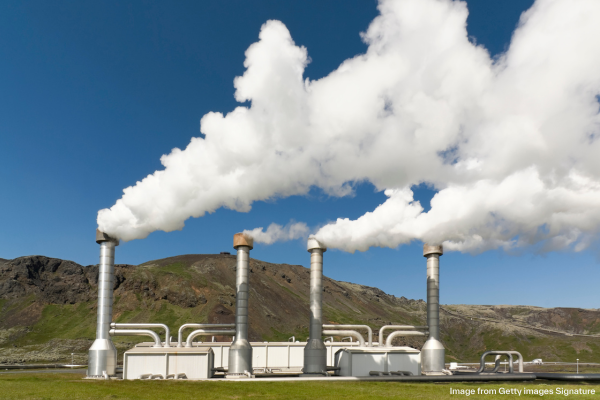
Geothermal energy isn’t just for clean power—it can also drive carbon removal. New research from the Clean Energy Conversions Lab shows that pairing geothermal with direct air capture (DAC) can boost CO₂ abatement by up to 757%. Learn how this dual-use approach could reshape climate strategy and policy.
When we think about clean energy, we usually focus on renewable electricity generation–solar panels, wind turbines, and hydropower–and, more importantly, we focus on how these need to be deployed and scaled to sustain a carbon-free grid and a growing demand for electricity. However, mitigating climate change isn’t just about generating green electrons. It’s about balancing the tools we have to reduce ongoing carbon dioxide (CO2) emissions and to get rid of excess CO2 that is already in the atmosphere.
One way to reduce ongoing CO2 emissions is to switch to clean, renewable energy to displace fossil fuels from the grid. Renewable energy can also contribute to CO2 removal activities. Because the concentration of CO2 in the atmosphere is so dilute, separating CO2 from the mix of other molecules in the air can require a lot of energy. But, in the case of direct air capture (DAC), the majority of the energy needed to remove CO2 from the atmosphere is in the form of heat. Clean heat. This is where geothermal energy comes in.
Thanks to new federal incentives in the U.S., geothermal resources are being reimagined as a dependable, renewable power source that can support baseload power generation by providing a constant power supply to the grid 24/7. But the Clean Energy Conversions Lab’s research suggests we should also be thinking bigger. What if geothermal could do double duty—not just powering the grid, but actively removing CO2 from the air?
